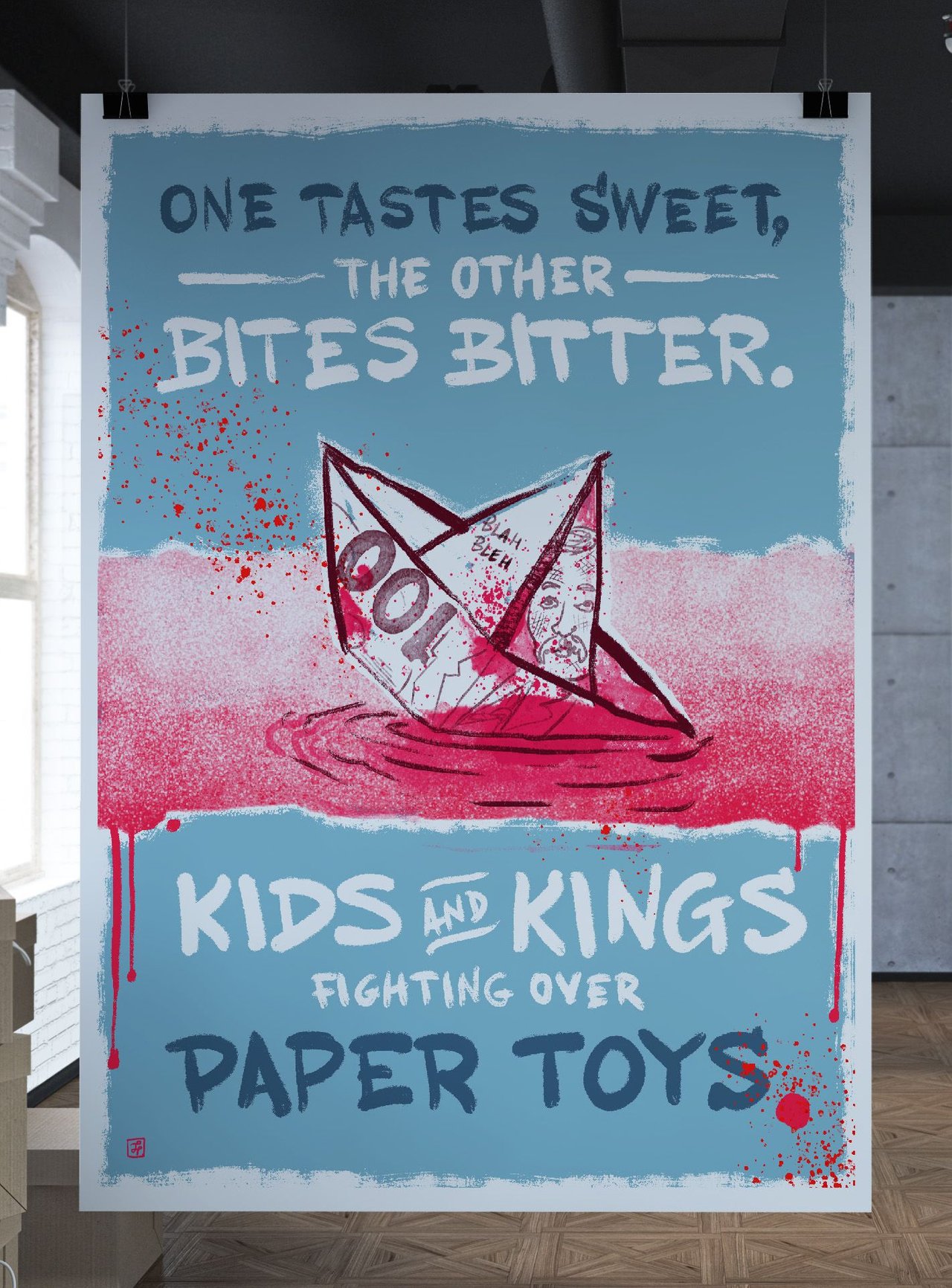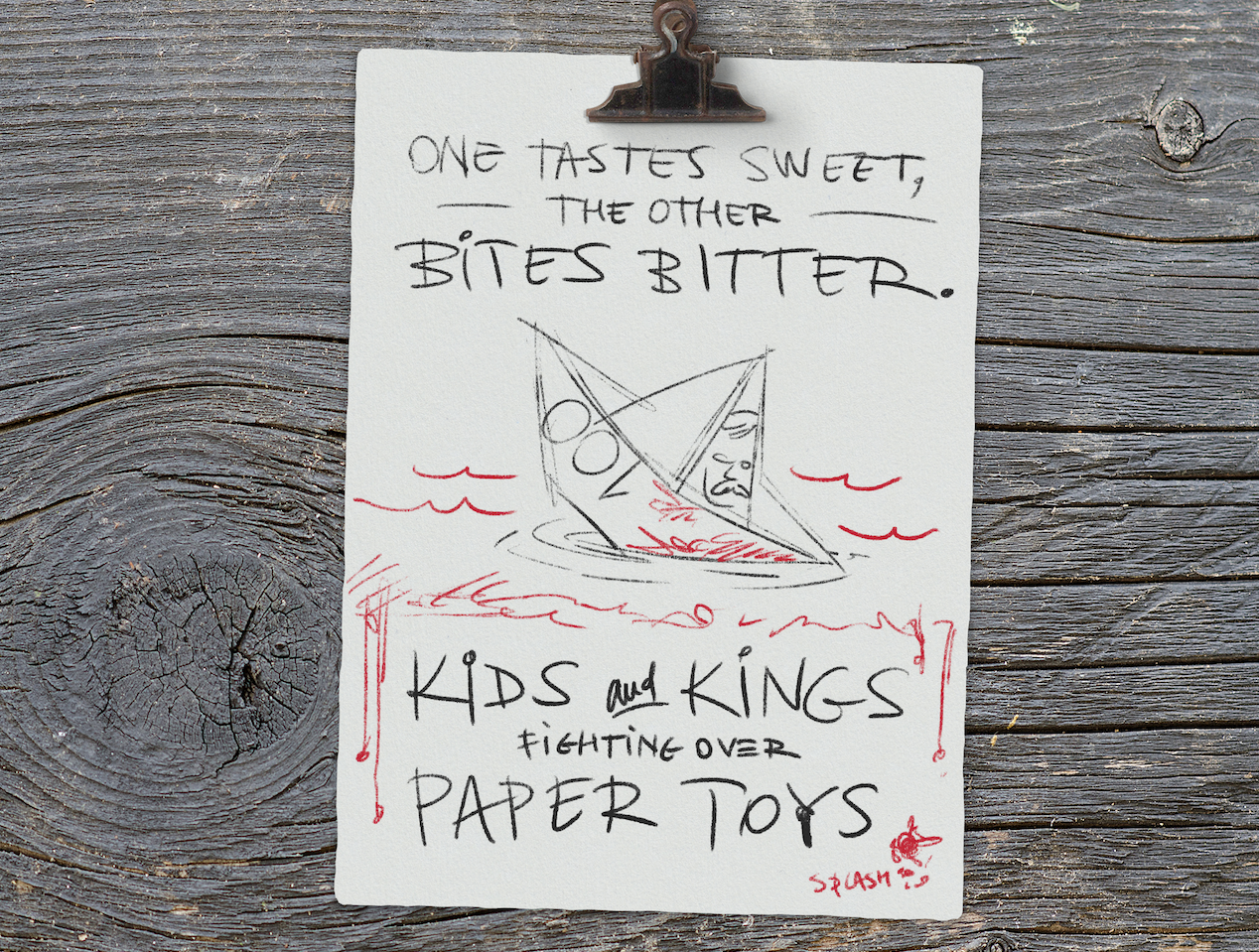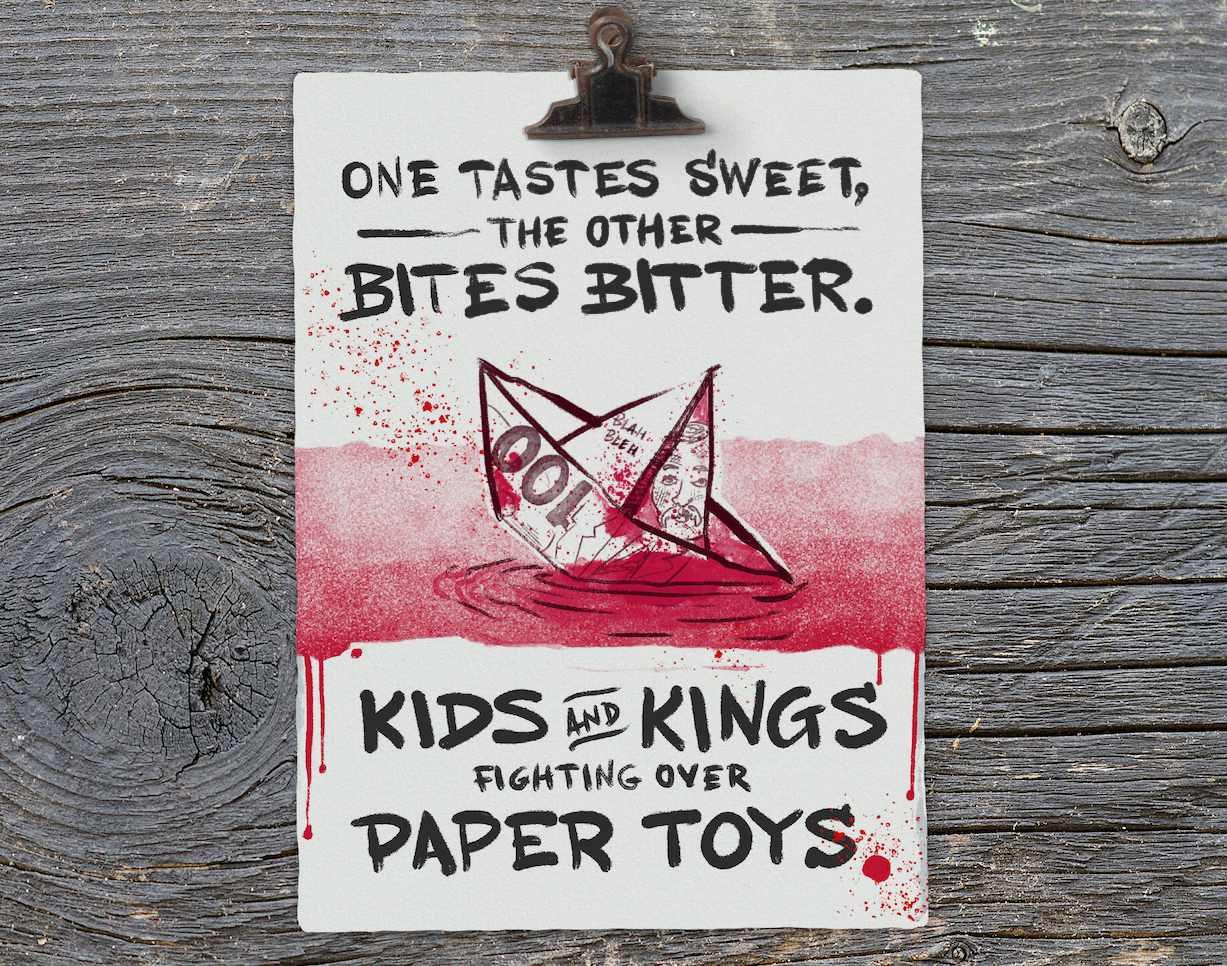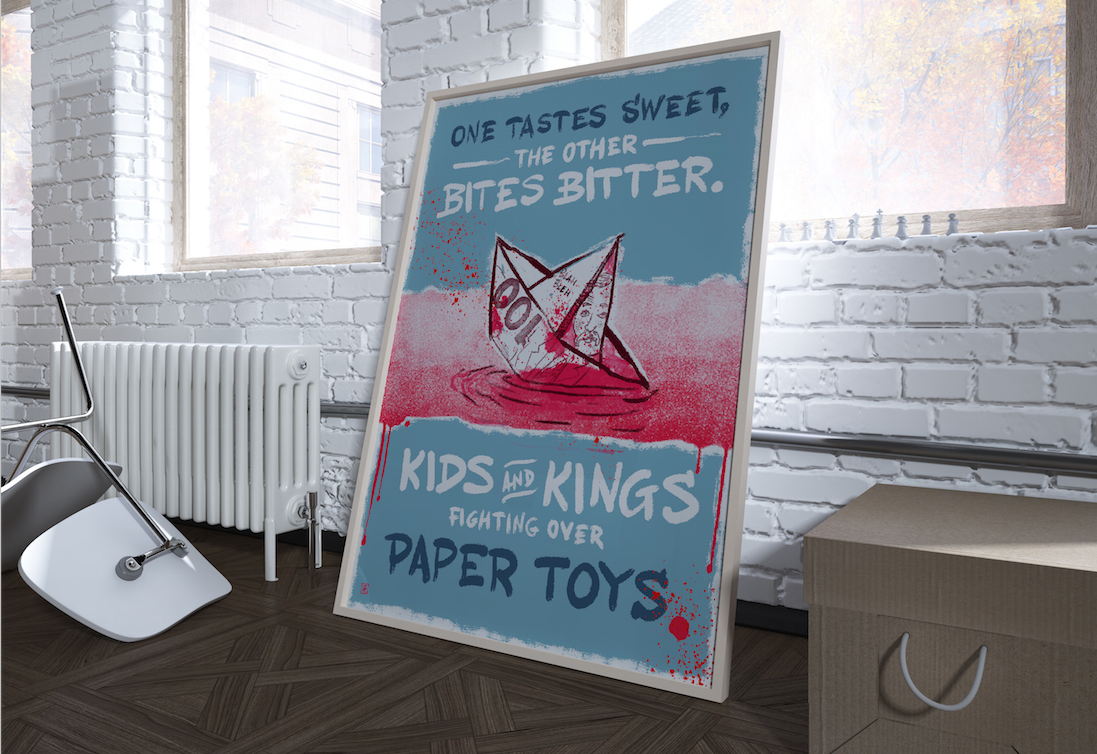
A few months ago I started playing with a Japanese kind of short poetry - one breath poems called Haiku. I know, this is no Haiku, but liked the idea of mixing different points of view into my work as if complementing each other: one in writing form and the other as a drawing. I believe they call it Haiga when it comes along with an illustration.
I particularly liked the idea that, without the combined view of both art forms - writing and drawing - the piece would not be complete. Much like a jigsaw puzzle, where the full meaning would come to life only when all of the pieces were assembled.
I also found it amusing that the Haiku poets I was reading stretched this notion even further than I anticipated. There was always some kind of surprise, an a-ha moment in the reading experience. As if the 2 points of view seemed almost impossible to conciliate.

And that is what I tried to do with this piece. I wanted to show 2 worlds seemingly so disparate that it would be almost impossible to make them meet: the simple world of children, that play and fight over their toys without much concern or consequence and the world of adults, especially people in positions of power - kings, prime-ministers, presidents, powerful businessmen - that in the end, would fight over the same little things that children do. Their ego-driven fights, on the other hand, have dreadful consequences for all of us: families, parents, children, animals and the environment.
And even though this is not a post about animals, I believe it has its place.
After all, the world-stage somehow resembles no more than a schoolyard. At least that's how I see it.

In the end, I also wanted to lighten up things a bit, so I added a blue background and some magenta tint to the final piece (so it's not sooo bloody).

I hope the piece speaks for itself.
Cheers,
J.P.
